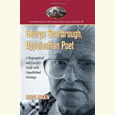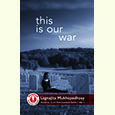Finding a Place in the Light
Novelist Marianne Wiggins talks with Chapter 16 about her Oak Ridge novel—and how the fatwa against Salman Rushdie was part of its genesis
Marianne Wiggins spent five years researching Evidence of Things Unseen. Set in East Tennessee, the novel is an epic love story, a mystery, a passionate argument against technological advances made at the cost of human lives—and the reason the Friends of Knox County Public Library will host an Evening with Marianne Wiggins on January 24. Wiggins will give a free public talk at the East Tennessee History Center in Knoxville in a celebration of the joint 125th anniversary of the Knox County Public Library and the Knoxville News Sentinel.
Evidence of Things Unseen is an enormously well-researched time capsule of rural America between the World Wars. In 2003, reviewers called the book “masterful and moving”(Publishers Weekly), “vivid” (Powell’s), “heartfelt” (Booklist),“breathtaking” (the Los Angeles Times), and “incandescent” (the San Francisco Chronicle). Nominated for both the National Book Award (2003) and the Pulitzer Prize (2004), Evidence of Things Unseen offers an artful study of marriage and parenthood with a cache of intricate details about the making of the atomic bomb. Both parts of the tale are explosive.
 The novel’s protagonist is Ray Foster, a World World I Veteran fresh from fighting in the trenches of France. Fos returns home to the South obsessed with electricity, light, and X-rays. He meets his future wife, Opal, on a trip to North Carolina to study the Perseid meteor shower. After marrying, they settle in Knoxville, where Fos runs a photography studio with his Army buddy Flash, whose run-ins with the police force Fos and Opal to move to her mother’s farm along the Clinch River. In addition to following their journey, the book also touches on moonshiners, inadvertent electrocutions, the Scopes Trial, Moby-Dick, sex, and Hiroshima, to name a few. In 1942, after losing the farm to the Tennessee Valley Authority as part of the New Deal, Fos starts work at the Oak Ridge Laboratory, where scientists are on deadline to create the atomic bomb. After years of infertility, Fos (whose first name, Ray, alludes to a ray of light) and Opal (a reference to opalescence) adopt a baby, a son they name Lightfoot. But at Oak Ridge, Fos’s fascination with chemistry and radiance, which have long been his passion, leads his family, down a darker path.
The novel’s protagonist is Ray Foster, a World World I Veteran fresh from fighting in the trenches of France. Fos returns home to the South obsessed with electricity, light, and X-rays. He meets his future wife, Opal, on a trip to North Carolina to study the Perseid meteor shower. After marrying, they settle in Knoxville, where Fos runs a photography studio with his Army buddy Flash, whose run-ins with the police force Fos and Opal to move to her mother’s farm along the Clinch River. In addition to following their journey, the book also touches on moonshiners, inadvertent electrocutions, the Scopes Trial, Moby-Dick, sex, and Hiroshima, to name a few. In 1942, after losing the farm to the Tennessee Valley Authority as part of the New Deal, Fos starts work at the Oak Ridge Laboratory, where scientists are on deadline to create the atomic bomb. After years of infertility, Fos (whose first name, Ray, alludes to a ray of light) and Opal (a reference to opalescence) adopt a baby, a son they name Lightfoot. But at Oak Ridge, Fos’s fascination with chemistry and radiance, which have long been his passion, leads his family, down a darker path.
At the heart of Evidence of Things Unseen lies a wellspring of curiosity, an urgency and hunger that pulls Fos and Opal towards each other and, along with their son, out into the world: “[W]hat being in the War and being in the Army had shown him was that people by and large tend naturally toward light, toward its source, as sunflowers do in a field,” Wiggins writes in the novel. “People lean, either in their dreams or in their actions, toward that place where they suspect their inner lights are coming from. Whether they call it God or conscience or the manual of the Army protocol, people sublime toward where their inner fire burns, and given enough fuel for thought and a level playing field to dream on, anyone can leave a fingerprint on the blank of history. That’s what Fos believed.”
“One of my hopes in Evidence,” Wiggins told Chapter 16 in an email, “was to try to make an argument against the randomness of modernity, to try to show that if we examine history closely enough there is usually evidence of causation—not that awful things don’t happen in a random way, they certainly do—but that many of the events in history that we might believe to have been ‘startling’ or ‘unexpected’ actually had their roots in former time, had been shedding clues.”
 From 1988 to 1993, Wiggins was married to the writer Salman Rushdie, whose 1988 novel, The Satanic Verses, led Iranian leader Ayatollah Khomeini to issue a fatwa against him. Fearing assassination, the couple lived in hiding under British protective custody. In her email, Wiggins linked the evolution of Evidence of Things Unseen to that experience: “I was probably psychologically ready to explore this idea as a result of much of the reaction, in America, to the death threat on Salman. Even now, more than twenty years after the fatwa, I still encounter people who tell me how ‘shocked’ they were, how they had ‘not seen it coming’; yet, when you examine the social fabric of England leading up to the publication of the book, all the evidence is there.”
From 1988 to 1993, Wiggins was married to the writer Salman Rushdie, whose 1988 novel, The Satanic Verses, led Iranian leader Ayatollah Khomeini to issue a fatwa against him. Fearing assassination, the couple lived in hiding under British protective custody. In her email, Wiggins linked the evolution of Evidence of Things Unseen to that experience: “I was probably psychologically ready to explore this idea as a result of much of the reaction, in America, to the death threat on Salman. Even now, more than twenty years after the fatwa, I still encounter people who tell me how ‘shocked’ they were, how they had ‘not seen it coming’; yet, when you examine the social fabric of England leading up to the publication of the book, all the evidence is there.”
It’s possible to see the same kind of chain reaction in her Oak Ridge novel: “I don’t necessarily believe in Causation in every instance,” Wiggins explained, “but I believe I make a strong case that without the federal government’s intervention via TVA, Oak Ridge would never have been built, and without Oak Ridge…. well, you get the point: nothing ever stands alone. One thing leads to another.”
Now sixty-five, the best-selling author has produced a novel or collection of short stories about every four years since 1975. She has lived, among other places, in England, Paris, Brussels, Martha’s Vineyard, and Southern California, where she is a professor of English at the University of Southern California. “The novel I’m writing now began with place,” Wiggins told Chapter 16, “in this case, the Owens Valley in California, which was pillaged at the start of the twentieth century by the City of Los Angeles for water and was also home, in Lone Pine, to the first Japanese-American internment camp during WWII. Once I find a place (or it finds me) then I have to create characters that breathe the essence of it.
“And,” she added, referring both to her new book and Evidence of Things Unseen, “I’m always a pushover for a love story.”
Friends of Knox County Public Library will host an Evening with Marianne Wiggins on January 24 at 7 p.m. at the East Tennessee History Center in Knoxville. The event is free and open to the public.


